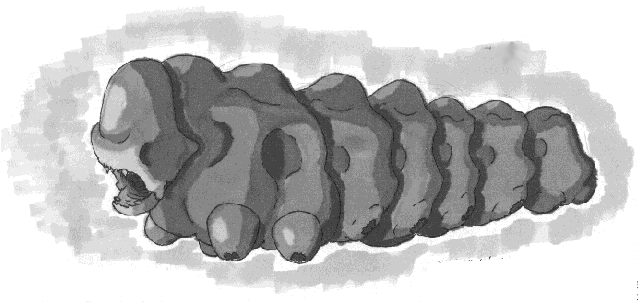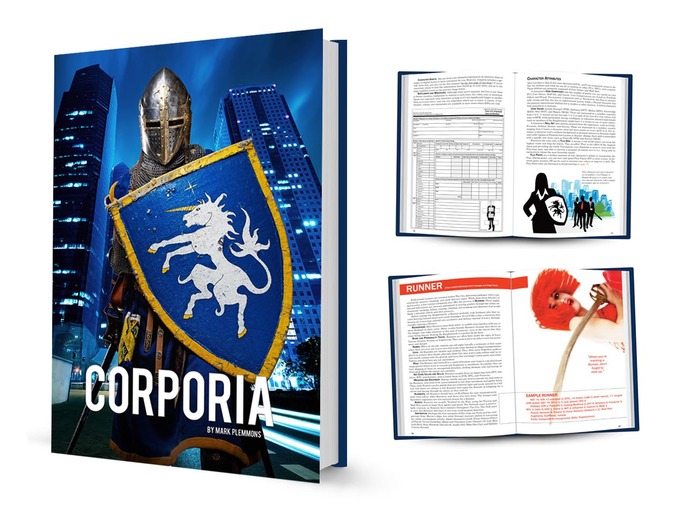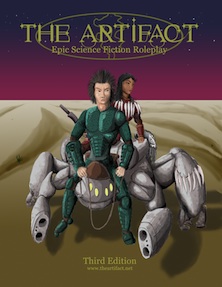In so many games and with so many players, I’ve seen characters that are designed to be devoid of emotion. They are gruff, calloused warriors, loners with nothing to tie themselves to this world but their fortunes and their expertise.
*Yawn*
Aside from a few poorly adjusted individuals, almost no one moves through life without emotional ties. Most people desire companionship and laughter. So why do players make characters like this?
Because it’s safe. If they have an emotional tie with someone, that person is a liability. They can be hurt, captured or even betray the PC. It’s better to be shielded from the outside world than risk that danger.
So what’s the solution? Will characters always be the heartless loners they are now? Can something melt through these hardened exteriors? Can you make the players risk the danger of an emotional connection? After all, the PCs face physical dangers all the time. Why aren’t they afraid of those? It has a lot to do with risk vs reward.
So how can emotional ties be a reward? When I look at this kind of question, I try to think of why people really behave the way they do. In this case, we have to think about what happens if a person has no emotional ties vs. someone who does.
People without emotional ties tend to get depressed more easily. They suffer from poorer health in most cases. They sometimes eat less healthy foods. Without people you trust to talk over issues, a person can make a string of poor choices. Over long periods, their behavior can become erratic.
People with emotional ties tend to be happier. They live longer. A lot of the inverse of what was just listed for a lack of emotional ties. But anther thing is that they have a reason to keep pushing forward when the going gets tough.
So what are these? A lot of the effects would be positive stress effects, not only mental but also physical. Maybe healing happens faster. Maybe advice could be used to make more intelligent choices. They may be able to call on their emotions for a boost in will power and endurance.
My thoughts on how to implement these effects is that if left to the GM, they’ll never get used. The GM already has enough to handle. Let the players handle it. Let them call on the positive effects when they need them.
In this kind of a system, I’d like to see players with a list of people their characters have ties with. Wife, children, friend, best friend all being something like an equipment list. Each relationship imparting different effects on the character. For instance, having children could give a significant boost to will power and endurance when the character’s life is in danger.
Spending time with loved ones and friends could be a stress reliever. Having friends and loved ones at your bedside (taking care of you) while healing could give that healing boost.
Obviously, the risk is still there but the game should be all the better for having characters and players that care about other people. Obviously some players would think of them only for their mechanical benefit “No! My stress point reliever!” but I’m not looking for the player to form emotional attachments to NPCs, just the characters. A lot of times players form attachments to their equipment anyway, which are all about mechanical benefits. Maybe some of that will leak through. At that point it’s just an issue of how it’s role played.
The bonuses have to be significant but not turn the characters into super humans.
For the Children! – When the character’s life is in danger, they get a 70% Advantage to Psyche and Constitution rolls.
Good Advice – If a character can talk with a friend or loved one, for IQ and Psy rolls they can use the helping mechanic to make multiple rolls using the other character’s attributes and pick the best result.
Friend – Spending an hour with a friend allows for a Charisma roll, each fractional success relives 1 Mental Stress. Each character’s roll effects the other character in the relationship. This time can be spent doing other simple tasks like eating, traveling, etc. This effect can be stacked up to four times. If a friend is wounded, the PC takes 10 Mental stress. If a friend dies, the PC takes 20 Mental stress. Breaking a friendship causes 15 Mental stress.
Love – A spouse, children, parents are all examples of loved ones. Spending an hour with a loved one allows for a Charisma roll, each fractional success relives 2 Mental, 1 Physical and 1 Functional stress.Can be time spent doing other simple tasks like eating, traveling, etc. If a loved one is wounded, the PC takes 20 Mental, 10 Physical and 10 Functional stress. If a loved one dies, the PC takes 40 Mental, 20 Physical and 20 Functional stress. Breaking ties with a loved one causes 30 Mental , 15 Physical and 15 Functional stress.
True Love – Spending an hour with a true love allows for a Charisma roll, each fractional success relives 3 Mental, 2 Physical and 2 Functional stress. Can be time spent doing other simple tasks like eating, traveling, etc. If a true love is wounded, the PC takes 30 Mental, 20 Physical and 20 Functional stress. If a true love dies, the PC takes 60 Mental, 40 Physical and 40 Functional stress. Only one True Love can ever be claimed by a character. Breaking ties with a true love causes 60 Mental , 30 Physical and 30 Functional stress.
Healing – Having a friend help with a character’s healing by staying at the PC’s side gives a 30% Advantage to healing rolls. This Advantage can be stacked up to 3 times. Having a loved one help with a character’s healing by staying at the PC’s side gives a 50% Advantage to healing rolls. This Advantage can be stacked up to 2 times.
Player characters can claim each other as friends and loved ones. The other player (or the GM in the case of NPCs) can choose to reciprocate or it could be a one way relationship.
Normally there is some kind of a cost when a character wants a new piece of equipment or something that gives them a mechanical bonus. Possibly the threat of loss would be enough to dissuade a player from claiming every NPC as their friend. Maybe it shouldn’t be that easy though. Maybe a friend or loved one needs to be attracted.
Next up? The Rules of Attraction.
Update: I added a Charisma roll to each hour for reliving stress.





 The Free RPG Blog
The Free RPG Blog